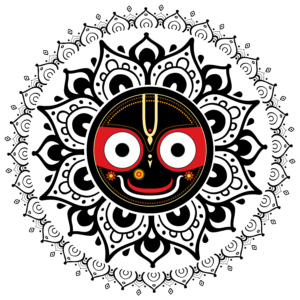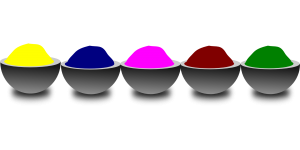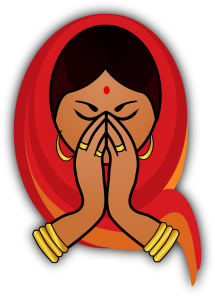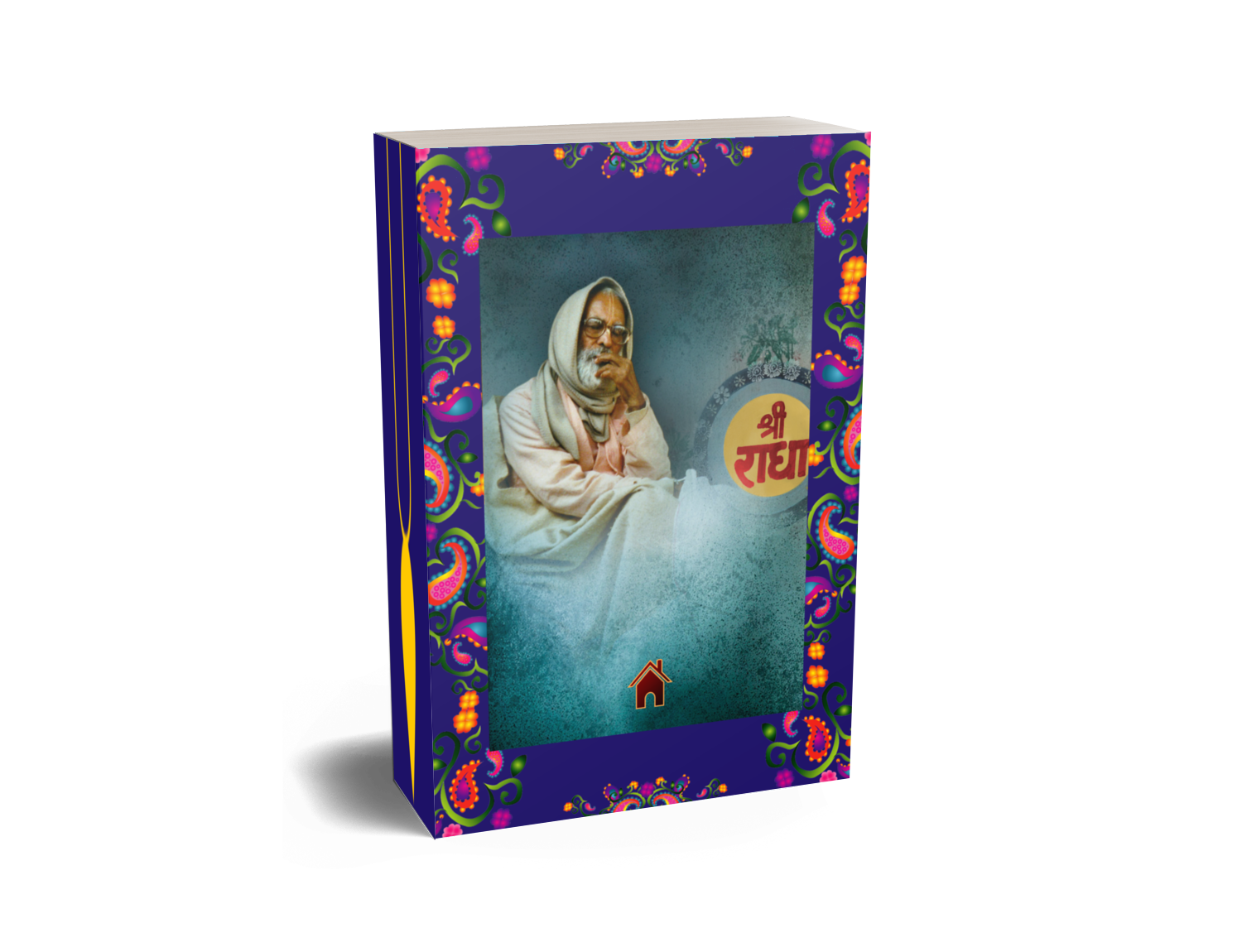
 The following is a letter written by Śrīla Bhaktivedānta Nārāyaṇa Mahārāja to a devotee, on the subject of Tulasī dāsa’s Rāma-carita-mānasa. This letter was previously published on the Internet in 1996.
The following is a letter written by Śrīla Bhaktivedānta Nārāyaṇa Mahārāja to a devotee, on the subject of Tulasī dāsa’s Rāma-carita-mānasa. This letter was previously published on the Internet in 1996.
Dear Bhakti-vaidūrya Mādhava Mahārāja,
Please accept my humble obeisances. All glories to Śrī Śrī Guru and Gaurāṅga. I have received your letter dated June 21, 1996. Because I am presently on tour, I was delayed in responding to your letter. Please forgive me for this.
I have read your letter, and in this regard I want to say that you should not take my response as that of an 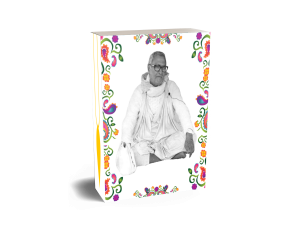 opponent, but rather as that of a friend. For about fifty-five years I have had the good fortune to associate with very learned disciples of Śrīla Bhaktisiddhānta Sarasvatī Ṭhākura Prabhupāda who are deeply conversant with all the conclusions of śāstra. As a result, I had the opportunity to hear from and serve many of the most prominent disciples, such as my Gurudeva, as well as pūjyapāda Śrī Bhaktivedānta Svāmī Mahārāja, pūjyapāda Śrautī Mahārāja, pūjyapāda Giri Mahārāja, pūjyapāda Gosvāmī Mahārāja, pūjyapāda Vaikhānasa Mahārāja, pūjyapāda Purī Mahārāja, pūjyapāda Mādhava Mahārāja and pūjyapāda Śrīdhara Mahārāja.
opponent, but rather as that of a friend. For about fifty-five years I have had the good fortune to associate with very learned disciples of Śrīla Bhaktisiddhānta Sarasvatī Ṭhākura Prabhupāda who are deeply conversant with all the conclusions of śāstra. As a result, I had the opportunity to hear from and serve many of the most prominent disciples, such as my Gurudeva, as well as pūjyapāda Śrī Bhaktivedānta Svāmī Mahārāja, pūjyapāda Śrautī Mahārāja, pūjyapāda Giri Mahārāja, pūjyapāda Gosvāmī Mahārāja, pūjyapāda Vaikhānasa Mahārāja, pūjyapāda Purī Mahārāja, pūjyapāda Mādhava Mahārāja and pūjyapāda Śrīdhara Mahārāja.
I consider Śrīla Svāmī Mahārāja as my śikṣā guru. I have had his association and have served him since 1946. By virtue of my being his śikṣā disciple, my faith in him and service to him is no less than any member of ISKCON. As a senior devotee of advanced age and experience, and due to my long-term intimate and affectionate friendship with him, he would show me a preferential respect, superior even to that which he offered his disciples. Kindly take note of all these facts first, and then consider what I am about to explain.
I would like to begin by explaining that I did not, as you infer in your letter to me, choose to bring up this discussion in public to disparage or minimise the authenticity of ISKCON. And I would like it to be known that this current ‘controversy’ is being stirred up by ISKCON, and not by myself.
For your information Tulasī dāsajī was a Vaiṣṇava belonging to the Rāmānanda sampradāya, a branch of the Śrī  sampradāya. All the four Vaiṣṇava sampradāyas are worthy of our respect. His name, Tulasī dāsa, is a Vaiṣṇava name and he wore the vertical (ūrdhva-puṇḍra) Vaiṣṇava tilaka. He also wore tulasī-mālā around his neck and was initiated into the śrī-rāma-mantra, which is a mantra for obtaining perfection. His guru was siddha Narahari (Nṛsiṁhadeva) dāsa. His worshipful Deities were Śrī Sītā-Rāmacandra who are incarnations of Śrī Rādhā-Kṛṣṇa. In his numerous books he often glorified Vrajendra-nandana Kṛṣṇa. He explained the prominent glories of śrī-nāma especially for the age of Kali. He translated the Sanskrit ślokas of the Vedas, Upaniṣads, Purāṇas, Śrīmad-Bhāgavatam, and especially the Rāmāyaṇa, into Hindi poetical verse. He has written on the importance of śaraṇāgati, and he accepted bhagavad-prema as the highest goal and object for the jīvas. He accepted the nine forms of bhakti described in the Śrīmad-Bhāgavatam. He accepted the jīvas to be the separated parts and parcels of the Lord, as has been explained in the Gītā and Śrīmad-Bhāgavatam. He also accepted the doctrine of acintya-bheda-abheda or, in other words, the simultaneous oneness and difference which exists between the omnipotent Lord and His potency (śakti-śaktimān). He completely disregarded sāyujya-mukti and the other forms of liberation. Throughout his writings he refuted the theory of Māyāvāda. Therefore, he has not expressed Māyāvāda conclusions in any of his writings.
sampradāya. All the four Vaiṣṇava sampradāyas are worthy of our respect. His name, Tulasī dāsa, is a Vaiṣṇava name and he wore the vertical (ūrdhva-puṇḍra) Vaiṣṇava tilaka. He also wore tulasī-mālā around his neck and was initiated into the śrī-rāma-mantra, which is a mantra for obtaining perfection. His guru was siddha Narahari (Nṛsiṁhadeva) dāsa. His worshipful Deities were Śrī Sītā-Rāmacandra who are incarnations of Śrī Rādhā-Kṛṣṇa. In his numerous books he often glorified Vrajendra-nandana Kṛṣṇa. He explained the prominent glories of śrī-nāma especially for the age of Kali. He translated the Sanskrit ślokas of the Vedas, Upaniṣads, Purāṇas, Śrīmad-Bhāgavatam, and especially the Rāmāyaṇa, into Hindi poetical verse. He has written on the importance of śaraṇāgati, and he accepted bhagavad-prema as the highest goal and object for the jīvas. He accepted the nine forms of bhakti described in the Śrīmad-Bhāgavatam. He accepted the jīvas to be the separated parts and parcels of the Lord, as has been explained in the Gītā and Śrīmad-Bhāgavatam. He also accepted the doctrine of acintya-bheda-abheda or, in other words, the simultaneous oneness and difference which exists between the omnipotent Lord and His potency (śakti-śaktimān). He completely disregarded sāyujya-mukti and the other forms of liberation. Throughout his writings he refuted the theory of Māyāvāda. Therefore, he has not expressed Māyāvāda conclusions in any of his writings.
It is incorrect to think that Śrīman Madhvācārya has accepted only the Vālmīki Rāmāyaṇa as authoritative. In his commentary on a statement from the Skanda Purāṇa he has written as follows (quoted in Gauḍīya Kaṇṭhahāra):
ṛg-yajuḥ-sāmātharvāś ca bhārataṁ pañcarātrakam
mūla-rāmāyaṇaṁ caiva śāstram ity abhidhīyate
yac cānukūlam etasya tac ca śāstraṁ prakīrtitam
ato’nya grantha vistaro naiva śāstraṁ kuvatma tat
“The four Vedas – Ṛg, Yajur, Sāma and Atharva — the Mahābhārata, the original Rāmāyaṇa and the Pañcarātra are all authoritative and bona fide scriptures. Any scriptures which follow in support of them are all accepted as authoritative. All other scriptures apart from these are not accepted as authoritative.”
Śrīla Svāmī Mahārāja supports the very same conclusion as seen in the following quotes:
“According to Śrīla Rūpa Gosvāmī, any book that gives enlightenment in the matter of advancing in devotional service is considered to be revealed scripture. Śrīla Madhvācārya has also defined revealed scriptures as referring to books such as the Rāmāyaṇa, Mahābhārata, Purāṇas, Upaniṣads, Vedānta – and any other literature written in pursuance of such revealed scriptures.” (The Nectar of Devotion Chapter 12)
“Therefore we have to gather knowledge from the right source. Indeed, in reality we can get knowledge only from the Vedic sources. The four Vedas, with their supplementary Purāṇas, the Mahābhārata, the Rāmāyaṇa and their corollaries, which are known as smṛtis, are all authorized sources of knowledge. If we are at all to gather knowledge, we must gather it from these sources without hesitation.” (Śrī Caitanya-caritāmṛta, Ādi-līlā 5.14, Purport)
“The Ṛg Veda, Yajur Veda, Sāma Veda, Atharva Veda, Mahābhārata, Pañcarātra and the original Vālmīki Rāmāyaṇa are all Vedic literatures. Any literature following the conclusive statements of these Vedic literatures is 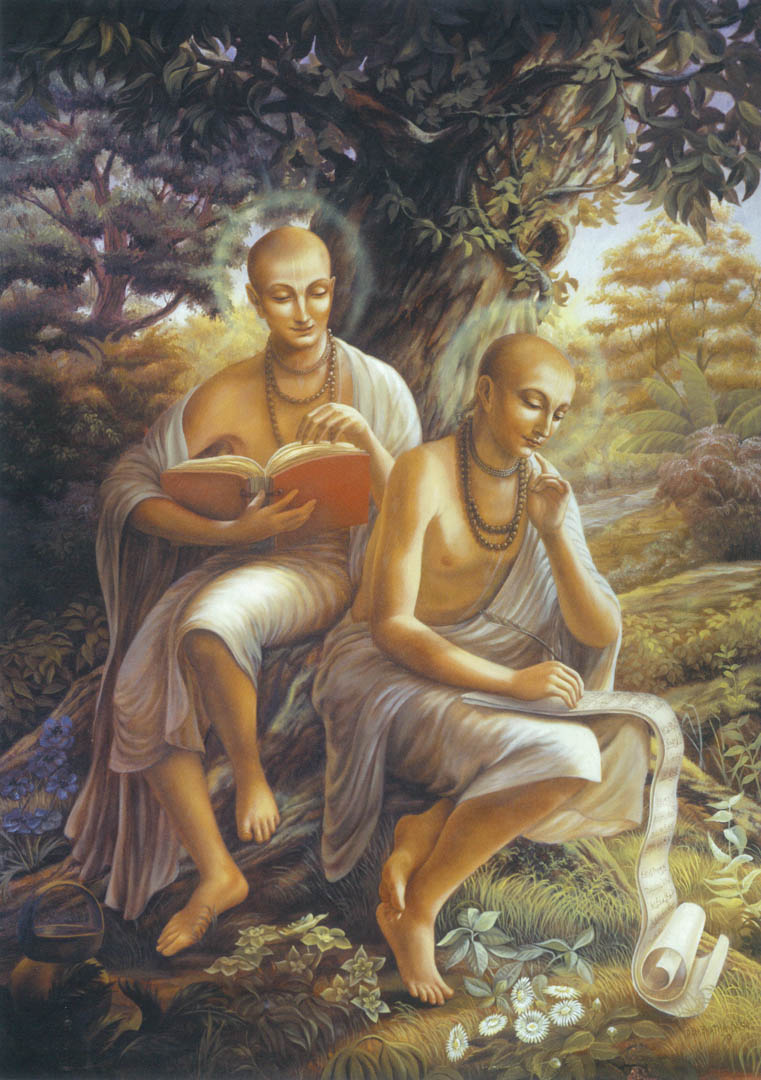 also to be considered Vedic literature. That literature which does not conform to Vedic literature is simply misleading.” (Śrī Caitanya-caritāmṛta, Madhya-līlā 6.147, Purport)
also to be considered Vedic literature. That literature which does not conform to Vedic literature is simply misleading.” (Śrī Caitanya-caritāmṛta, Madhya-līlā 6.147, Purport)
The conclusion is that all scriptures which give favourable support to these literatures are also accepted as bona fide and authoritative. Otherwise, all the books of Śrī Rāmānuja, Śrī Rūpa Gosvāmī, Śrīla Jīva Gosvāmī and Śrīla Kavirāja Gosvāmī could not be accepted as authoritative. There are no learned scholars or ācāryas of other sampradāyas who wrote commentaries on any of the books of Śrīla Rūpa Gosvāmī, Jīva Gosvāmī or Kṛṣṇadāsa Kavirāja Gosvāmī. Yet these books certainly cannot be said to be inauthentic. It is irrelevant to say that Kṛṣṇadāsa Kavirāja Gosvāmī did not accept evidence from the Rāmāyaṇa of Tulasī dāsa, because at that time it had not yet been published, for Tulasī dāsa was a contemporary of Śrī Rūpa Gosvāmī.
I would like to point out to you that you have also cited the verse of Śrī Madhvācārya twice in your letter to me. The first reference you give is from Śrīla Svāmī Mahārāja’s Caitanya-caritāmṛta, Madhya[-līlā, Chapter Six] 147, although you neglected to mention what chapter of Madhya-līlā it was from. I have also cited Śrīla Svāmī Mahārāja’s translation of this verse above. For some reason when you quoted this statement, you omitted the sentence which would have refuted your argument and which, coincidentally, appears precisely in the middle of Śrīla Svāmī Mahārāja’s translation: “Any literature following the conclusive statements of these Vedic literatures is also to be considered Vedic literature.”
Although we are substantiating the authority of Tulasī Rāmāyaṇa, the question may be asked why we don’t regard it on the same level as the Gauḍīya Vaiṣṇava literature. The reason for this is that although, according to Vaiṣṇava siddhānta, it is accepted as bhakti scripture in a routine sense, it does not present a complete description of rāgānuga (or rūpanuga) rasamayī bhakti. Similarly, the Viṣṇu Purāṇa and other śāstras do not propound kṛṣṇa-bhakti-rasa, although they are certainly bhakti scriptures. Therefore we accept Śrīmad-Bhāgavatam and the books of Śrī Rūpa, Sanātana and other Gosvāmīs as being the most authoritative and 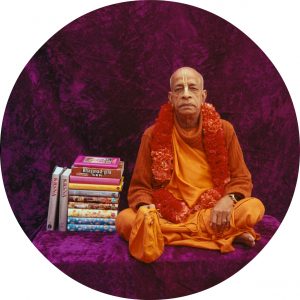 efficacious for us.
efficacious for us.
If, as you wrote in your letter to me, Tulasī dāsa’s writing in Hindi is a disqualification, then must we conclude that the Caitanya-caritāmṛta of Kṛṣṇadāsa Kavirāja Gosvāmī, and the Gītā and Bhāgavatam translations and purports of param-pūjyapāda Śrīla Bhaktivedānta Svāmī Mahārāja due to being written in Bengali and English respectively, are also inauthentic?
The book Prema-sāgara is a Hindi translation of Śrīmad-Bhāgavatam done by the well-known Māyāvādī Śrī Śāntanu Dvivedī. The Tulasī Rāmāyaṇa, however, is a book translated by a highly reputed perfected soul of deep spiritual realisation. If Śrīla Tulasī dāsa was indeed a Māyāvādī, then kindly present some concrete evidence to support your conclusion. Blind following will simply not do. The disciple must correctly understand and explain the teachings of his gurudeva. You are all learned research scholars. You can examine the writings of Tulasī dāsa for yourself. If you detect any Māyāvāda conclusions in his writings then you should give evidence directly from his statements.
I have personally read and studied the Rāma-carita-mānasa in Hindi, in its entirety, at least ten times. May I ask how many times you have read Tulasī’s original Rāmāyaṇa with scrutiny? I am well acquainted with the conclusions of Vaiṣṇava śāstra and have been associating with pure Vaiṣṇavas for a long time. My conclusions, and the conclusions of other respected Vaiṣṇavas in our line, is that there is not a trace of Māyāvāda anywhere in the original work of the Tulasī Rāmāyaṇa. As I am travelling now, I do not have access to that book; but upon consulting it, I can surely provide you with concrete evidence from the direct statements of the book to support my position.
There are numerous statements in Śrīmad-Bhāgavatam and other Vaiṣṇava scriptures which may seem to support Māyāvāda conclusions. In these śāstras, the Absolute Truth is sometimes referred to as advaya-jñāna, and kaivalya is sometimes spoken of as the ultimate destination. I quote here a verse and translation from Śrīla Svāmī Mahārāja’s Bhāgavatam translation (4.22.27), which superficially seems to support the Māyāvāda theory:
dagdhāśayo mukta-samasta-tad-guṇo
naivātmano bahir antar vicaṣṭe
parātmanor yad-vyavadhānaṁ purastāt
svapne yathā puruṣas tad-vināśe
“When a person becomes devoid of all material desires and liberated from all material qualities, he transcends distinctions between actions executed externally and internally. At that time the difference between the soul and the Supersoul, which was existing before self-realization, is annihilated. When a dream is over, there is no longer a distinction between the dream and the dreamer.”
Although this verse and others may be misinterpreted to support the Māyāvāda theory, Śrīla Svāmī Mahārāja has clearly explained its true Vaiṣṇava conception in his commentary. For a correct understanding, individual verses must be understood in relationship to the overall presentation.
Śrīdhara Svāmī, the original Bhāgavatam commentator, was sometimes accused of having Māyāvāda leanings;  yet Caitanya Mahāprabhu accepted him as being most authoritative. He said that anyone who disregarded the commentary of Śrīdhara Svāmī should be rejected as a prostitute, or one who does not follow his Svāmī. Similarly, there may be some statements of Tulasī dāsa which could be misinterpreted as supporting Māyāvāda conclusions, but these then must be reconciled in relationship to his overall presentation of siddhānta.
yet Caitanya Mahāprabhu accepted him as being most authoritative. He said that anyone who disregarded the commentary of Śrīdhara Svāmī should be rejected as a prostitute, or one who does not follow his Svāmī. Similarly, there may be some statements of Tulasī dāsa which could be misinterpreted as supporting Māyāvāda conclusions, but these then must be reconciled in relationship to his overall presentation of siddhānta.
Similarly, your letter has presented certain quotes by Śrīla Svāmī Mahārāja, but I have here several quotes from him that present a different picture. The first one pre-dates any you have given. In this quote Śrīla Svāmī Mahārāja seems to suggest a very different conclusion about Tulasī dāsa:
“So he became a great devotee of Rāma, Tulasī dāsa. His book, Rāma-carita-mānasa. ‘Thinking always of Rāma,’ that is his book. It is very famous book, and that is the only important literature in the Hindi language, Rāma-carita-mānasa.” (Room conversation with Brāhmaṇanda, April 12, 1969)
And again, in another conversation, this is affirmed:
“Devotee: Tulasī dāsa said that he wanted to see Rāma.
Prabhupāda: Yes. That is devotee’s inclination. That we must have.” (Room Conversation Śrīmad-Bhāgavatam 6.1.14 November 10, 1970 Bombay, India)
In two other instances Śrīla Svāmī Mahārāja describes the conclusions of Rāma-carita-mānasa as being consistent with Vedic conclusions and based on śāstras such as the Gītā and Bhāgavatam:
“And Tulasī dāsa, he has also said… Tulasī dāsa is big poet in Hindi language. He has written the Rāma-carita-mānasa. His opinion… Not only his opinion, that is the Vedic opinion, that… He says, dhol gamar strī śūdra…, paśu śūdra nārī, ei ei sab śāsana ke adhikārī(?). So this statement will not be very palatable to the Western girls.” (Lecture Śrīmad-Bhāgavatam 5.6.4 November 26, 1976 Vṛndāvana, India)
“The Tulasī dāsa’s Rāmāyaṇa means Rāma-carita-mānasa. It is not Rāmāyaṇa. Rāma-carita-mānasa. He was devotee of Lord Rāmacandra. So as he was thinking of Lord Rāmacandra, he has written. So he was a learned scholar, brāhmaṇa, he must have read Bhagavad-gītā, Bhāgavatam. So all his translation is there on the basis of the śāstra, especially Bhāgavatam and Bhagavad-gītā. You’ll find many parallel passages. But Gītā is the summary of all Vedic literature, and it is spoken by the Personality of Godhead.” (Evening Darśana July 8, 1976, Washington DC)
Apart from the above quotes, I have also noted at least thirteen times when Śrīla Svāmī Mahārāja has quoted Tulasī dāsa’s writings as a positive authority in his books or lectures to substantiate a preaching point he was making. For brevity I have simply noted the references here and you may consult them at your leisure. If Śrīla Svāmī Mahārāja truly considered Tulasī dāsa and his writing to be unauthorised, it appears odd that he would quote him so often in his preaching. The following are the references:
Śrīmad-Bhāgavatam 6.11.4, Purport
Bhagavad-gītā 2.15 August 21, 1973 London Lecture
Śrīmad-Bhāgavatam 1.16.19 July 19, 1974 Los Angeles, CA
Śrīmad-Bhāgavatam 2.3.19 July 9, 1974 Los Angeles, CA
Śrīmad-Bhāgavatam 2.9.7 April 24, 1972
Śrīmad-Bhāgavatam 6.1.33 July 18, 1975 San Francisco, CA
Śrīmad-Bhāgavatam 6.1.39 July 20, 1975 San Francisco, CA
Śrīmad-Bhāgavatam 6.3.12-15 Lecture February 9, 1971 Gorakhpur, India
Morning Walk through BBT Warehouse – February 10, 1975 Los Angeles, CA
Morning Walk – May 25, 1976 Honolulu, HW
Arrival Room Conversation – July 2, 1976 Washington, DC
Morning Walk – February 2, 1977 Bhubaneswar
Room Conversation – April 19, 1977 Bombay, India
In addition to all the above quotes, I feel it necessary to respond to some of the quotes you have given as evidence against Tulasī dāsa. On close inspection it is apparent that almost none of them really have anything negative to say about him or his Rāma-carita-mānasa. Furthermore, in many of the quotes you have omitted portions, which validate him. Please excuse me for pointing this out, but I think it is necessary to arrive at a proper understanding of the issue.
During a lecture in Montreal on Rādhāṣṭamī August 30 in 1968 Śrīla Svāmī Mahārāja quoted Tulasī dāsa and 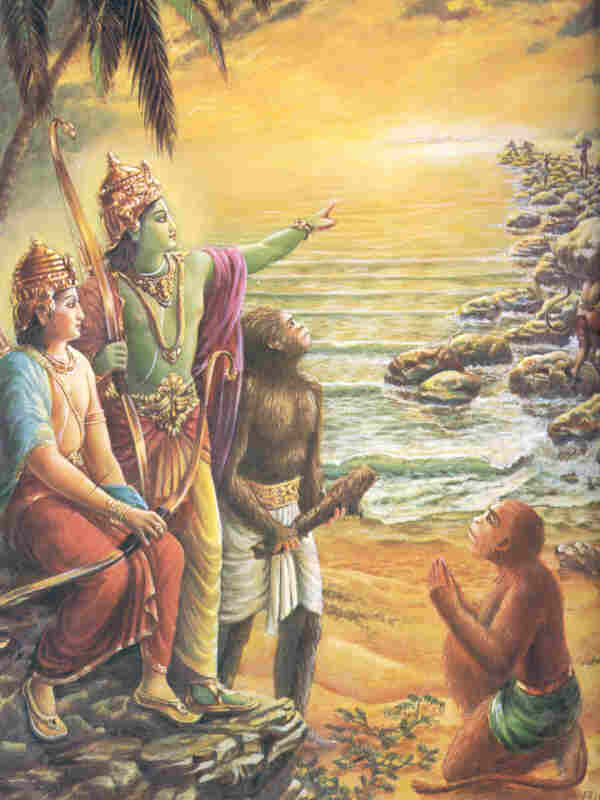 referred to him as a great devotee: “am aprameyam anaghaṁ nirvāṇa-śānti-pradaṁ brahma-śambhu-phanīndras tebhyo ‘niśaṁ vedānta-vedyaṁ vibhuṁ sura-guruṁ māyā-mānuṣya-hariṁ vande ‘haṁ karunākaraṁ raghu-varaṁ bhū-pāla-cudāmaṇim: This is a verse composed by a great devotee, Tulasī dāsa. He was a devotee of Lord Rāmacandra.”
referred to him as a great devotee: “am aprameyam anaghaṁ nirvāṇa-śānti-pradaṁ brahma-śambhu-phanīndras tebhyo ‘niśaṁ vedānta-vedyaṁ vibhuṁ sura-guruṁ māyā-mānuṣya-hariṁ vande ‘haṁ karunākaraṁ raghu-varaṁ bhū-pāla-cudāmaṇim: This is a verse composed by a great devotee, Tulasī dāsa. He was a devotee of Lord Rāmacandra.”
You have also quoted a latter portion of the above quote. However, you did not quote it in full: “Our this respectable Indian lady, she will begin Rāmāyana… This Tulasī…, this actually is not Rāmāyaṇa. It is called Rāma-carita-mānasa. Rāmāyaṇa means Vālmīki Rāmāyaṇa, but people have taken it as Rāmāyaṇa. Actually, Tulasī dāsa has expressed his own feelings about his devotion to Lord Rāma, and therefore he has named it Rāma-carita-mānasa, his mind full with service attitude for Lord Rāma.
That is the real meaning of this book. But people have misinterpreted; they are going on just it is Rāmāyaṇa. And Rāmāyaṇa, of course, anywhere where Rāma’s activities are described, that is called Rāmāyaṇa. That is another sense. But real Rāmāyaṇa means the Rāmāyaṇa composed by Maharṣi Vālmīki.
And this is… It is a popular notion that this is Rāmāyaṇa, but actually this book is called Rāma-carita-mānasa. So some of the descriptions of Rāma are there, but not all the descriptions. Rather, there are many differences from the original Vālmīki Rāmāyaṇa. Anyway, this is a song of a devotee for his Lord Rāma. In that sense, you can call it Rāmāyaṇa, but this book is actually Rāma-carita-mānasa.”
This quote does not actually say anything negative about Tulasī dāsa or his Rāma-carita-mānasa. It simply points out that there is a difference between the Vālmīki Rāmāyaṇa and the Rāma-carita-mānasa. It should be noted, however, that this work was an expression of his mind ‘full with service attitude for Lord Rāma’. The part of the quote which you omitted, was the last two sentences: “This is a song of a devotee for his Lord Rāma and so it may, in that sense, be called Rāmāyaṇa.
In the next quote given by you, the only point made was that Tulasī dāsa’s Rāmāyaṇa is but a partial representative of Śrīmad-Bhāgavatam. The significant point, that you left out, was that Tulasī dāsa was a devotee of Lord Rāma and he gave his thoughts in his book Rāmāyaṇa:
“From your book Soviet Studies of India I understand that academician Mr. A. P. Baranrikov completed a great translation, working the matter of Tulasī dāsa’s Rāmāyaṇa into Russian. Śrīmad-Bhāgavatam is the ripe, mature fruit of the Vedic knowledge, and Tulasī dāsa’s Rāmāyaṇa (Rāma-carita-mānasa) is but a partial representative of Śrīmad-Bhāgavatam. The real Rāmāyaṇa is Vālmīki’s Rāmāyaṇa. Tulasī dāsa was a devotee of Lord Rāma and he has given his thoughts in his book Rāmāyaṇa. But the real original thoughts and ideas are in Śrīmad-Bhāgavatam.” (Letter to Professor Kotovsky June 24, 1971)
In the next quote given by you (which I have replicated in the next paragraph) there is no mention whatsoever of Tulasī dāsa or his Rāma-carita-mānasa. When Śrīla Svāmī Mahārāja states that there are many unauthorised Rāmāyaṇas, the reader is supposed to infer that he is referring to Tulasī dāsa’s version. Yet Śrīla Svāmī Mahārāja goes on to say that five thousand years ago there were many Rāmāyaṇas. This part of the quote was not mentioned by you. Since Tulasī dāsa’s Rāma-carita-mānasa is a medieval work and was not published five thousand years ago Śrīla Svāmī Mahārāja certainly could not be referring to his book as one of the unauthorised versions. Most of the quotes which you give subsequently are in the same vein. There is no mention of Tulasī dāsa, but the reader by this time automatically assumes that his Rāma-carita-mānasa is being referred to as unauthorised.
“Unless one is tattva-darśī, in complete knowledge of the Absolute Truth, one cannot describe the activities of the 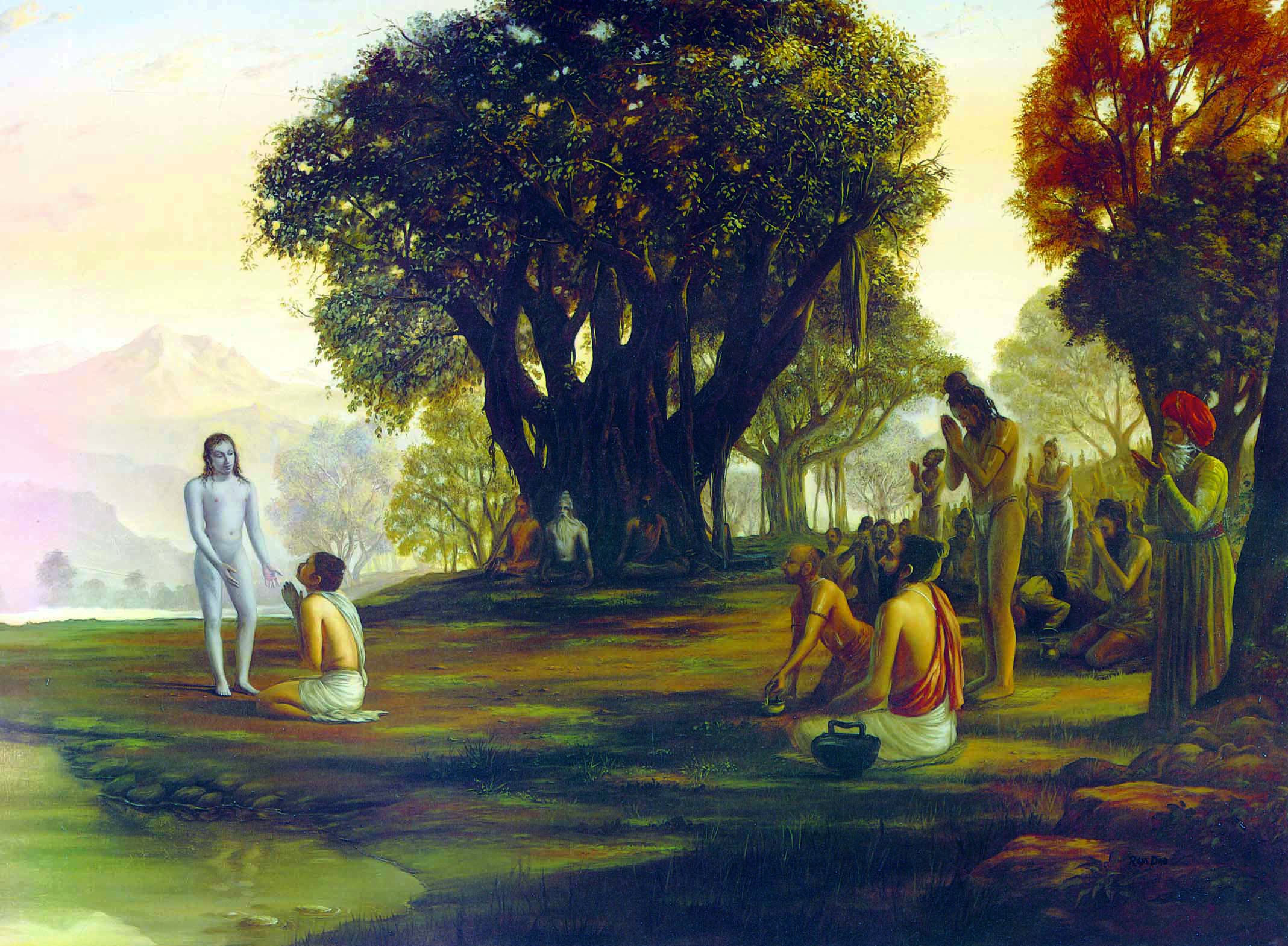 Personality of Godhead. Therefore although there are many so-called Rāmāyaṇas, or histories of Lord Rāmacandra’s activities, some of them are not actually authoritative. Sometimes Lord Rāmacandra’s activities are described in terms of one’s own imaginations, speculations or material sentiments. But the characteristics of Lord Rāmacandra should not be handled as something imaginary. While describing the history of Lord Rāmacandra, Śukadeva Gosvāmī told Mahārāja Parīkṣit, “You have already heard about the activities of Lord Rāmacandra.” Apparently, therefore, five thousand years ago there were many Rāmāyaṇas, or histories of Lord Rāmacandra’s activities, and there are many still. But we must select only those books written by tattva-darśīs (jñāninas tattva-darśinaḥ), not the books of so-called scholars who claim knowledge only on the basis of a doctorate. This is a warning by Śukadeva Gosvāmī.” (Śrīmad-Bhāgavatam 9.10.3, Purport)
Personality of Godhead. Therefore although there are many so-called Rāmāyaṇas, or histories of Lord Rāmacandra’s activities, some of them are not actually authoritative. Sometimes Lord Rāmacandra’s activities are described in terms of one’s own imaginations, speculations or material sentiments. But the characteristics of Lord Rāmacandra should not be handled as something imaginary. While describing the history of Lord Rāmacandra, Śukadeva Gosvāmī told Mahārāja Parīkṣit, “You have already heard about the activities of Lord Rāmacandra.” Apparently, therefore, five thousand years ago there were many Rāmāyaṇas, or histories of Lord Rāmacandra’s activities, and there are many still. But we must select only those books written by tattva-darśīs (jñāninas tattva-darśinaḥ), not the books of so-called scholars who claim knowledge only on the basis of a doctorate. This is a warning by Śukadeva Gosvāmī.” (Śrīmad-Bhāgavatam 9.10.3, Purport)
There is one quote remaining which offers a strong criticism of Tulasī dāsa and his book. Yet this must be weighed against all of the positive statements. Without seeing the broader siddhāntic view, how are we then to reconcile these apparently opposite opinions? How is it that Śrīla Svāmī Mahārāja has seen fit to give such an appreciation of Tulasī dāsa as a bona fide Vaiṣṇava?
The letter of 1969 which you quoted in your letter to me also needs to be put in its proper historical perspective:
“Regarding the two books you have mentioned, Śrī Rāma-carita-mānasa by Gosvāmī Tulasī dāsa is not very authorized, and Rāmāyaṇa is authorized. One thing is though, you have got enough other books to study. Did you appear in the examination held on Janmāṣṭamī Day? Why should you go to Rāmāyaṇa when you have got Bhagavad-gītā, Śrīmad-Bhāgavatam and Teachings of Lord Caitanya? Don’t divert your attention in that way. The author of Rāma-carita-mānasa, Gosvāmī Tulasī dāsa, has a tint of Māyāvadī philosophy. He belogs to the Rāmānanda sampradāya. They are mixed up combination of personalist and impersonalist. Therefore, the author is not considered as pure Vaiṣṇava. Pure Vaiṣṇava is free from all material contamination of fruitive activities and mental speculation. The pure Vaiṣṇava is simply, purely disposed to transcendental loving service to Kṛṣṇa. The pure Vaiṣṇava rejects anything which has no pure idea of serving the Personality of Godhead.” (Letter to: Raktaka, Hamburg, 6 September, 1969)
Of all the quotes you have presented as evidence against Tulasī dāsa or his Rāma-carita-mānasa the only one that really stands as a substantial criticism is the one which I have reproduced in its entirety above. Consistent with your approach to discussing this topic you have selected only a portion of the quote. It may be noted also that this quote was made by Śrīla Svāmī Mahārāja only five months after the conversation in which he stated that Tulasī dāsa was a great devotee of Rāma and that his book is the only important literature in the Hindi language. Furthermore, this statement was made in 1969 when his disciples were very immature in their spiritual development without even having read Bhagavad-gītā. The part of the letter which you omitted was that Śrīla Svāmī Mahārāja did not want his disciples’ attention diverted when they had so many other books to read. It may also be questioned how authentic the English translations were they were reading. When we examine all of the positive statements that Śrīla Svāmī Mahārāja made about Tulasī dāsa and the Rāma-carita-mānasa, it appears that he simply wanted his disciples to focus on the books he was translating and not questionable translations of other books. This is the real crux of the matter, and not the authenticity of Tulasī dāsa’s work.
There is a misconception that the title of Tulasī dāsa’s book, Rāma-carita-mānasa, suggests that it was inspired from the mānasa, or mind, of Tulasī dāsa, and thus it is not a work of divine revelation. Yet in Śrīmad-Bhāgavatam (1.7.4) we find the exact same word (manasi) used to describe the vision which inspired Śrīla Vyāsadeva to write Śrīmad-Bhāgavatam:
bhakti-yogena manasi
samyak praṇihite ’male
apaśyat puruṣaṁ pūrṇaṁ
māyāṁ ca tad-apāśrayām
“By the power of bhakti-yoga Śrīla Vyāsadeva, being firmly concentrated in meditation with a purified mind, saw 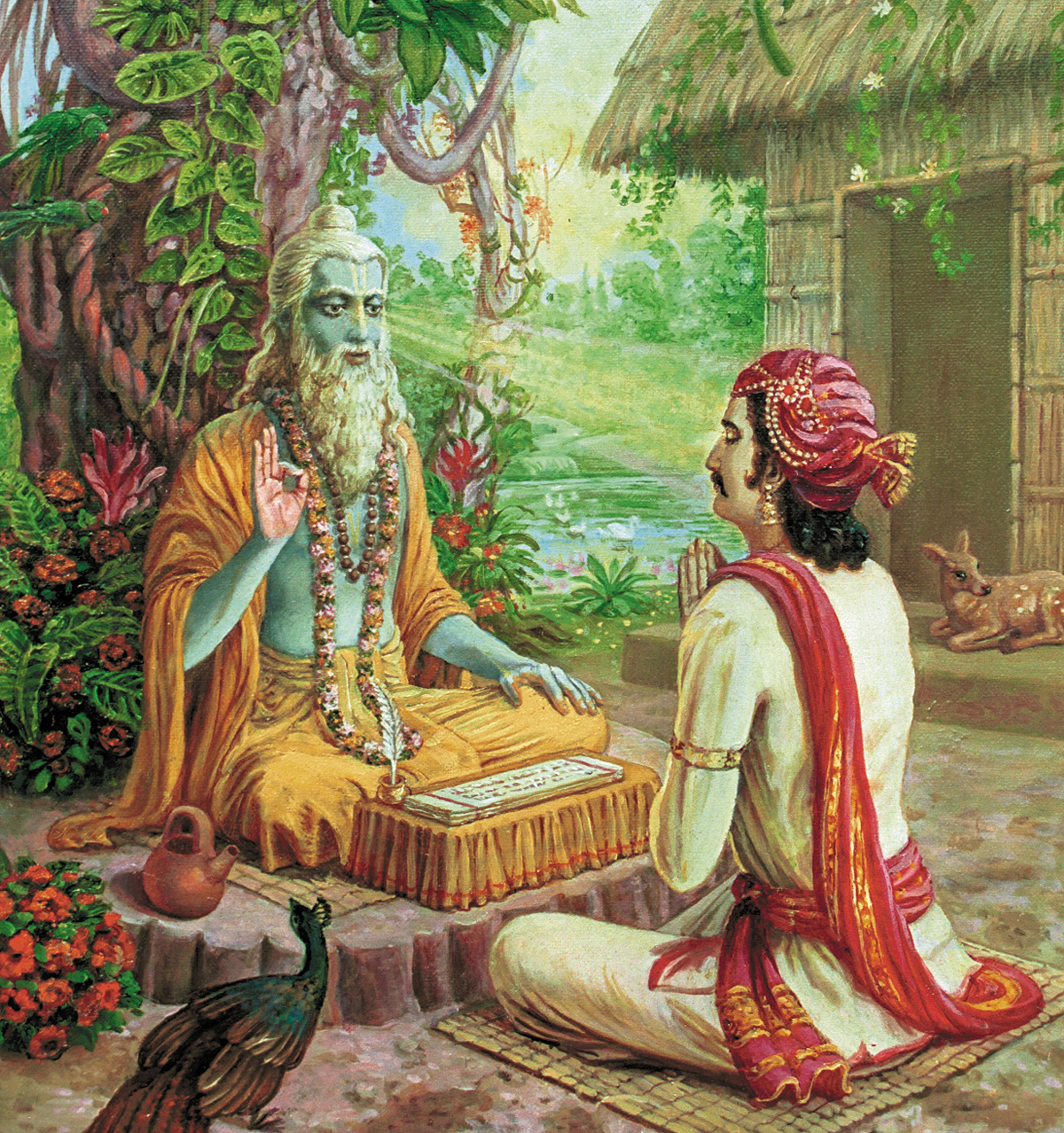 Śrī Kṛṣṇa fully endowed with spiritual effulgence, with His plenary portions, and with His internal potency of svarūpa śakti. His external potency māyā, being of an inferior nature, was seen in the background under His control.”
Śrī Kṛṣṇa fully endowed with spiritual effulgence, with His plenary portions, and with His internal potency of svarūpa śakti. His external potency māyā, being of an inferior nature, was seen in the background under His control.”
It is said in this verse ‘manasi apaśyat,’ that he saw the complete Absolute Truth with the mind. Yet Śrīmad-Bhāgavatam is not to be taken as manasi-grantha, but rather as samādhi-grantha, for Vyāsadeva’s mind was fully absorbed in samādhi and his perception was by the power of bhakti-yoga. Similarly the Rāmāyaṇa of Tulasī dāsa should not be taken as manasi-grantha for it sprung from his purified mind which was absorbed in complete samādhi by the power of bhakti-yoga.
Please forgive me if this letter has caused you any discomfort.
Vaiṣṇava dāsa anudāsa,
B.V. Nārāyaṇa
Source: Purebhakti.com
Image(s) made possible by Pixabay.com, Krishnapath.org and/or Bhaktiart.net
Unless indicated differently, all verse translations and quotes are from the books by Śrīla Prabhupāda (Vedabase.com)